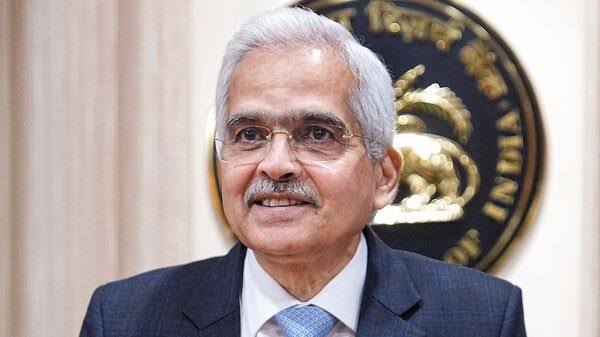Add your promotional text...
RBI Holds Repo Rate Steady at 6.5% Amidst Rising Food Inflation: What It Means for Borrowers and the Economy
Synopsis: The Reserve Bank of India (RBI) has kept the Repo rate unchanged at 6.5% for the ninth consecutive time, prioritizing inflation control amid persistent food inflation. This decision provides stability for borrowers, with EMIs remaining unaffected, while the central bank maintains a cautious outlook on economic growth and inflation. As global market dynamics shift, particularly with potential rate cuts by the US Federal Reserve, the RBI’s future policy decisions will be closely watched.
TOP STORIES
By Vishwash Saxena
8/9/20243 min read


The Reserve Bank of India (RBI) has once again opted to keep the Repo rate unchanged at 6.5%, marking the ninth consecutive meeting where this decision has been upheld. This move comes amid ongoing concerns over rising food inflation, which continues to be a significant factor influencing retail inflation.
Monetary Policy Stance: Unwavering in the Face of Inflationary Pressures
On Thursday, August 8, the RBI’s Monetary Policy Committee (MPC) announced that the monetary policy stance will remain focused on the ‘withdrawal of accommodation.’ This indicates that the central bank is prioritizing the need to control inflationary pressures without introducing further changes to the interest rates.
Implications for Borrowers: A Period of Stability
With the MPC maintaining the Repo rate at its current level, banks are expected to keep their interest rates steady as well. This is good news for borrowers, as their equated monthly instalments (EMIs) for loans will remain unchanged, providing much-needed stability in uncertain times.
Economic Projections: Growth and Inflation Outlook
The RBI has also reaffirmed its GDP growth projection for the financial year 2024-25 at 7.2%, while keeping the retail inflation forecast steady at 4.5%. This is despite the ongoing challenges posed by food inflation, which has been a persistent issue In recent months. In July, the International Monetary Fund (IMF) also revised India’s GDP growth forecast for FY25, increasing it by 20 basis points to 7%.
Food Inflation: A Growing Concern
Food inflation has become a growing concern for the RBI, with the central bank highlighting the risks it poses to the overall disinflation process. Headline inflation, measured through year-on-year changes in the all-India consumer price index (CPI), rose to 5.1% in June from 4.8% in May. Specifically, food inflation jumped to 8.4% in June, up from 7.9% in May.
In a recent statement, the RBI noted that food inflation, which accounts for approximately 46% of the CPI basket, contributed more than 75% to headline inflation in May and June. A significant portion of this increase was driven by rising vegetable prices, which alone accounted for about 35% of the inflation in June. Other major food items also experienced elevated inflationary pressures.
Governor’s Call for Vigilance
RBI Governor Shaktikanta Das underscored the importance of maintaining price stability to ensure high economic growth. He emphasized that the MPC must remain vigilant to prevent the spillover effects of persistent food inflation, which could derail the central bank’s efforts to keep inflation under control.
The RBI also pointed to some potential relief from food inflation in the coming months, driven by a favorable southwest monsoon and progress in sowing activities. Additionally, the central bank highlighted that buffer stocks of cereals continue to be above the required norms, providing further assurance.
Future Inflation Expectations
The central bank has pegged CPI inflation for 2024-25 at 4.5%, assuming a normal monsoon season. However, this forecast is contingent upon a variety of factors, including global economic conditions and domestic agricultural output.
Global Market Dynamics: A Potential Influence on RBI’s Future Actions
Analysts suggest that recent global market developments, particularly those driven by geopolitical tensions in the Middle East, fluctuations in the Japanese yen, and concerns about a potential US recession, could influence the RBI’s future policy stance. The expectation of rate cuts by the US Federal Reserve has increased in recent weeks, with some analysts predicting a 50-basis-point cut as early as September and cumulative cuts of up to 115 basis points in 2024.
Madhavi Arora, lead economist at Emkay Global Financial Services, noted that the volatility in global markets requires the RBI to remain flexible. Despite the challenges, she emphasized that the RBI has managed to maintain stability in India’s foreign exchange and interest rates amidst recent global market turmoil. Arora also suggested that the RBI may align its monetary policy with the global rate cycle to avoid significant future policy deviations.
However, Arora also expressed caution regarding the RBI’s GDP growth projections, suggesting that the central bank’s forecast of 7.2% growth for FY25 may be overly optimistic. She pointed out that weaker demand dynamics could keep core inflation under pressure, potentially complicating the RBI’s efforts to manage inflation.
HDFC Bank’s Perspective on US Federal Reserve Actions
In a statement, HDFC Bank indicated that expectations of a rate cut by the US Federal Reserve have grown significantly in recent weeks. While some of these expectations may be exaggerated, the bank noted that there is a high probability of the Fed beginning its rate cut cycle in September, with an initial cut of 25 basis points. This move could have implications for the Indian rupee and might prompt the RBI to adjust its monetary policy in line with the global rate cycle to prevent any significant deviations in the future.
In conclusion, the RBI’s decision to maintain the Repo rate at 6.5% reflects its cautious approach to managing inflationary pressures while supporting economic growth. The central bank’s focus remains on controlling food inflation and ensuring price stability, even as global economic dynamics continue to evolve. As the RBI navigates these challenges, its future policy decisions will likely be influenced by both domestic factors and global market developments.
